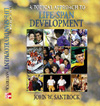 |  Life-Span Development: A Topical Approach John W. Santrock
Cognitive Processes and Development Intelligence
Learning Objectives1.Describe the various elements of intelligence and how intelligence is tested, including development and use of the Binet tests, the Wechsler scales, and group tests. |
 |  |  | 2.Present the arguments concerning whether we have a single intelligence or multiple intelligences. |
 |  |  | 3.Discuss infant intelligence, including the different ways to assess it, then explore the issues of stability and change through adolescence, looking at tasks that are used in infancy to predict intelligence later in childhood. |
 |  |  | 4.Explain the development changes in adulthood, such as Horn's argument that crystallized intelligence increases in middle adulthood whereas fluid intelligence declines, Schaie's findings that longitudinal and cross-sectional analysis produce different results, the concern about cohort effects, and the equivocal research suggesting that older adults have more wisdom than their younger counterparts. |
 |  |  | 5.Evaluate the controversies and issues in intelligence, including: - the heredity-environment controversy
- cultural and ethnic issues
- the use and misuse of intelligence tests
|
 |  |  | 6.Discuss the extremes of intelligence, specifically the classifications of mental retardation from mild to profound and the requirements for giftedness of having a high IQ or a special talent for something. |
 |  |  | 7.Explore the many aspects of creativity, particularly looking at:- convergent and divergent thinking
- the flexibility, playfulness, internal motivation, and willingness to take risks noted in creative people
- the peaking and decline of creativity in adulthood, noting the magnitude and variation of decline
- Csikszentmihalyi's strategies for living a creative life
|
|



 2002 McGraw-Hill Higher Education
2002 McGraw-Hill Higher Education